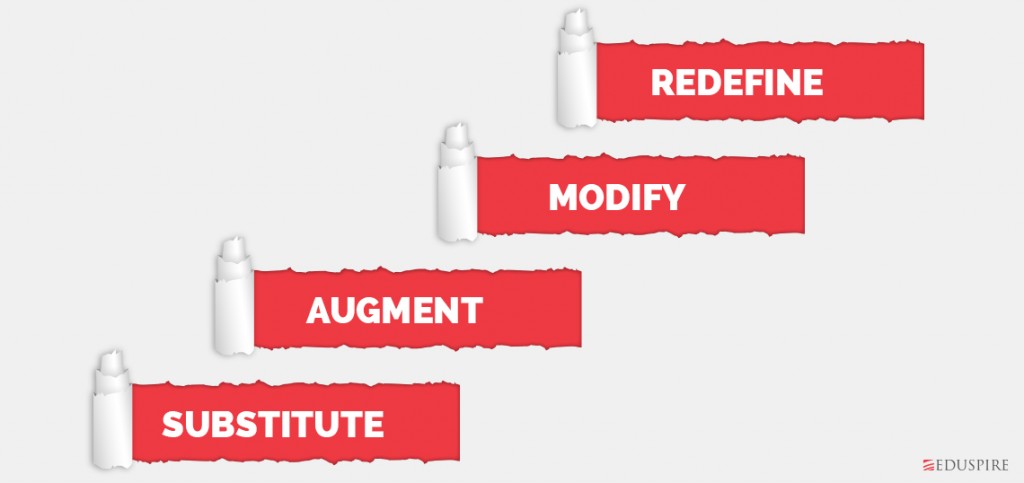SAMR for Smarties
There has been a lot of talk about the SAMR Framework that was developed by Ruben R. Puentedura, PhD. The SAMR Model is a simple way to evaluate your own level of technology integration in the classroom. If you are unfamiliar with this framework for evaluating the level of technology integration, take a look at this video to become acquainted, otherwise, skip the video and jump to The Pitfalls!
The Pitfalls!
Just like Papa Berenstain Bear, sometimes teachers try so hard that they become the example of what NOT to do. As an instructional technology coach, I sometimes find teachers:
- make use of technology just to use it, regardless of the true purpose,
- use the technology themselves rather than turning the active learning over to the students,
- think they must be at the Redefinition level to be considered a “good teacher.”
So, what can we do instead?
Let’s consider how to teach “above the line,” as so many people say. In other words, how do you move your technology integration to the levels of Modification and Redefinition at appropriate times? ALL levels are important at the right times, the most critical factor is that we are thinking about what we are planning for meaningful learning experiences for the students.
What might this look like in your classroom? Since screencasting has become so popular and is so quick and easy to do, let’s use it as an example:
Substitution — teacher-centered:
- Teachers create screencasts or utilize those created by others for student learning and review.
- Examples: Khan Academy Geometry lesson, Crash Course lesson on Bicameral Congress
Augmentation — teacher-centered:
- A teacher-created screencast is uploaded to EdPuzzle or eduCanon to insert questions, comments, time to think, etc. directly into the video. Students complete the work and submit for a grade.directly into the video. Students complete the work and submit for a grade.
Augmentation — student centered:
- Students create screencasts to share with the teacher to check for understanding.
- Example: Instead of one or two students answering questions aloud in the classroom, everyone participates through their own screencast explaining how to solve a problem or diagram the main idea and supporting evidence of a reading. The teacher can then address difficulties the students are having.
Modification — student centered:
- Students create screencasts to share with other students or the public for the purpose of learning from them and/or critiquing one another’s techniques.
- Example: In a learning management system, such as Schoology, students post their screencasts for the class and peers comment with questions they have or suggestions for improvements.
Redefinition — student centered:
- This level of technology integration requires us to step away from some of the most simple solutions stated above and jump into more long-term and far-reaching implementation.
- Students are involved in creating a YouTube channel for students, by students to tackle the struggles of achieving an understanding of the standards for a class in which they are enrolled. Screencasts are created, critiqued, judged to make the cut for the channel, organized, uploaded and marketed to other classes and schools to achieve followers and spread the knowledge.
How will you plan to teach “above the line” over the next week or month? Could you turn the active learning over to your students?
Creating the Technology-Infused Classroom, Using Technology to Promote Creativity & Innovation, and Exploring the New Frontier in Educational Technology are all fantastic Eduspire courses that will help you to increase the quality of technology integration through the use of the SAMR Framework.


